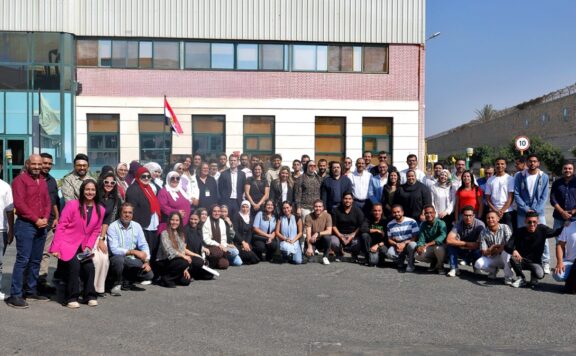Researchers from the UK and Ireland are collaborating on a new project to develop a key technology enabling the next generation of wireless communications. Engineers from the University of Glasgow are teaming up with colleagues from the Tyndall National Institute’s Wireless Communications Laboratory (WCL) for the project called Active, Intelligent Reconfigurable Surfaces for 6G Wireless Communications, or AR-COM.
AR-COM is supported by £1m in funding from UKRI’s Engineering and Physical Sciences Research Council (EPSRC) in addition to € 500K from Research Ireland.
Over the next three years, the AR-COM partners will develop new materials and methods to help IRS technologies achieve their full potential in the millimetre-wave and terahertz ranges of the communications spectrum.
Together with key industry partners, they will work to improve the design of smart materials called intelligent reconfigurable surfaces (IRS) which are expected to play a key role in the ultrafast 6G wireless networks of the future.
Tyndall’s WCL, based at University College Cork, was founded in 2020 by three former scientists from Nokia Bell Labs – Holger Claussen, Lester Ho and Senad Bulja – to boost Tyndall’s research activities in the communications space.
Intelligent reflecting surfaces can intercept weak wireless signals indoors and outdoors to guide them to devices actively, boosting the strength of the signal in the process to maximise performance.
In the future, as demand for improved indoor wireless signals increases, IRS devices could provide better mobile coverage in buildings with poor reception, enable more reliable high-speed internet connections and support new 6G applications, which will require extremely reliable wireless connections.
AR-COM will move through four key stages of research and development. In the first stage, the researchers will focus on creating advanced switches engineered from materials called transition metal oxides (TMOs) to enable precise and rapid control over wireless signal strength.
The second stage will develop technology to control the direction of wireless signals. The researchers will study how signals move through carefully designed layers of metal and TMO materials and find new ways for signals to be steered around obstacles in complex indoor environments.
In the third stage, the team will develop miniature signal amplifiers built using devices called resonant tunnelling diodes (RTDs), which can boost weakened signals while requiring very low amounts of power to operate.
Finally, the team will integrate all their newly-developed elements into a fully-functional IRS system which can effectively manipulate wireless signals with no signal loss and low latency, and maximise signal quality even in the most challenging environments.
The project is the latest development in cutting-edge 6G research from the University of Glasgow’s Communications, Sensing and Imaging (CSI) hub.
Professor Qammer H. Abbasi, Director of CSI Hub at the University of Glasgow’s James Watt School of Engineering, is the AR-COMS’s principal investigator.
He said: “Current materials used in wireless communications face significant limitations, especially at the higher frequencies that 6G networks will require. With AR-COM, we’re building on the expertise of the University of Glasgow and the Tyndall Institute with the support of key industry partners to develop truly next-generation technologies.”
Dr Senad Bulja will lead Tyndall National Institute’s contribution to AR-COM. He said: “Resonant tunnelling diodes, which can amplify signals while using very little power, and transition metal oxides which can act as ultra-fast switches have a great deal of potential to help overcome the bottlenecks of current generations of IRS technologies. Together, these technologies will help us create surfaces that not only redirect signals but also boost them with minimal energy consumption, which will help them find use in a wide range of devices in the years to come.”
Professor Muhammad Imran, project co-investigator and the head of the James Watt School of Engineering, said: “Intelligent reconfigurable surfaces will be key to solving the challenges of delivering robust 6G networks and enabling the next generation of wireless applications. Ultrafast, ultra-low latency wireless networks will underpin new forms of communication and sensing that will transform how we interact with each other in the years to come.”





